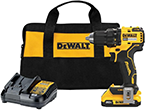Perhaps one of the most common winter problems for many homeowners is that their pipes freeze and then end up bursting. While this is a fairly common occurrence, it is also one that is fairly expensive. One of the best ways that you can help prevent it from happening to you is by making sure your pipes are properly insulated. If you find that they are not, never fear, insulating pipes is a task that is fairly easy. Just follow these instructions.
- Clean the pipes. The first step in insulating pipes is to actually get them clean. By doing this, not only will you help ensure that your pipes don't deteriorate over time, but also that mold and mildew will be dramatically less likely to grow in the insulation. When you do clean the pipes, use a mild cleanser and a rag to get them clean. Allow the pipes to completely dry before you begin putting the insulation on.
- Get your insulation. If you haven't already chosen the insulation that you will be using, this is the time to go and get the insulation you want to use. There are actually several different types of insulation that you can use. Some of the commonly chosen types are a foil or fiberglass insulation that you wrap around the pipes, or an insulated tubing that you can simply slip over the pipes. Talk to your local home improvement store clerks to get the best idea of the type of insulation you should use in your particular area.
- Cover the pipes. Take the insulation home, and then begin applying it to the pipes. Often this simply requires that you wrap the insulation around the pipes. If you are using the tape type of insulation, then you need to ensure that there is at least 1/2 inch overlap each time you wrap it around the pipes.
- Pay particular attention to corners. Just because you reach a bend in your pipes means that you stop. Instead, you will need to pay particular attention to these areas. For example, you will need to cut a slit or a miter joint in the insulation to help it fit to the pipes better. Furthermore, you will need to use some duct tape to help ensure that the insulation stays in place.
Now that you have finished insulting the pipes of your home, you should notice that your pipes don't freeze over anymore. That is, at least on the inside of your home. You still need to make sure that you don't have anything attached to the faucets outside. If you don't, you can easily end up having your pipes still freeze up, and potentially burst.
Author Bio
Lee Wyatt
Contributor of numerous Tips.Net articles, Lee Wyatt is quickly becoming a regular "Jack of all trades." He is currently an independent contractor specializing in writing and editing. Contact him today for all of your writing and editing needs! Click here to contact. Learn more about Lee...
Maintaining Your Septic Tank
Septic tanks are a fairly common piece of household equipment that need regular and steady maintenance. If they aren't ...
Discover More
Homemade Air Freshener
Have you ever noticed just how expensive air fresheners are? Why spend all that money on something that you can make ...
Discover More
Stop Your Toilet from Sweating
One of the more common problems that you can find around a toilet is called sweating. In severe cases this can make you ...
Discover More
More Home Improvement Tips
Installing a Pop-Up Drain
If you haven't already got a pop-up drain in your bathroom sink, then you need to think about installing one. Installing ...
Discover More
Installing a Wall-Hung Sink
If you don't like the current sink in your bathroom, you can always go with a traditional favorite, the wall-hung sink. ...
Discover More
Dealing with High Water Pressure
Despite what many people may like to think, there is such a thing as too much of a good thing. This is absolutely no ...
Discover More

Comments